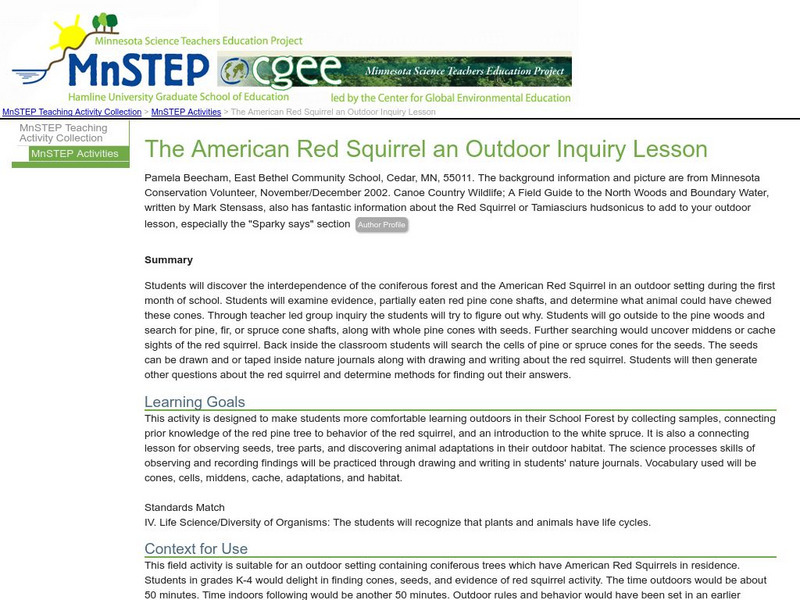BioEd Online
Bio Ed Online: Plant Parts You Eat
Did you know that some plant parts are edible? People rely on many different plants and plant parts for food. In this lesson plan students observe and investigate different plant-originated foods, and learn about plant parts.
TeachEngineering
Teach Engineering: Planting Thoughts
Young scholars gain an understanding of the parts of a plant, plant types and how they produce their own food from sunlight through photosynthesis. They also learn about transpiration, the process by which plants release moisture to the...
OpenSciEd
Open Sci Ed: 7.4 Matter Cycling & Photosynthesis
Where does food come from and where does it go next? This unit helps students figure out that they can trace all food back to plants, including processed and synthetic food. They obtain and communicate information to explain how matter...
Countries and Their Cultures
Countries and Their Cultures: Fali
The Fali belong to the vast paleonegritic group of people who are sometimes designated "Kirdi" (pagans), as opposed to the Islamized Peul or Fulbe, with whom they share the northern part of Cameroon. The Fali are farmers and...
PBS
Nh Pbs: Nature Works: Ecosystems
How would you define an ecosystem? Check out this educational resource to learn more about the living and nonliving parts of different ecosystems.
Science Education Resource Center at Carleton College
Serc: Mn Step: The American Red Squirrel an Outdoor Inquiry Lesson
For this activity, pupils are presented with red pine cones that have been partly eaten by the American Red Squirrel, a fact that is not divulged to them at this stage. After a discussion of the possibilities, the class takes a walk in...
Countries and Their Cultures
Countries and Their Cultures: Pende
The Pende occupy a territory that extends from the banks of the Lutshima, a tributary of the Kwilu, to the Kasai. The last colonial census (1959) indicated that there were 200,000 western Pende and another 40,000 Pende in Kasai, the...
Curated OER
Etc: Maps Etc: Population Distribution of Asia, 1921
A base map of Asia from 1921 showing the general population distribution of the region at the time. "The climate of southeastern Asia is so warm and moist that food plants grow there in abundance. Nearly half the people of the world live...




